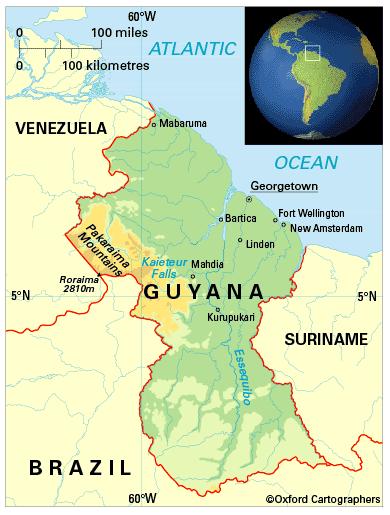Education in Guyana
Joined Commonwealth: 1966 
Population: 762,000 (2009)
GDP p.c. growth: 3.0% p.a. 1990-2009
UN HDI 2010: world ranking 104
Net primary enrolment: 98.8% (2009)
Gross tertiary enrolment: 11.2% (2009)
Public spending on education was 3.4% of GDP in 2009. There are ten years of compulsory education starting at age 5 years and 9 months. The net enrolment ratio is 98.8% for primary education, with a female-male ratio of 0.99:1 and gross enrolment ratio for all levels of education combined is 78.6% (2009). The pupil-teacher ratio for primary is 26:1 and for secondary 22:1 (2009). Some 83% of pupils complete primary school (2008). The school year starts in September.
Tertiary institutions include the Cyril Potter College of Education (for teachers), Guyana College of Agriculture, Commonwealth Youth Programme Caribbean Centre (which trains youth workers), and the University of Guyana in Georgetown, which has law and medical schools. The University of Guyana also provides adult education programmes.
The Caribbean Examinations Council, established in 1972 by an agreement among 15 English-speaking Commonwealth Caribbean countries and territories, provides examinations and certification at secondary and post-secondary levels. The Caribbean Secondary Education Certificate examination is for students at the end of the secondary education cycle; the Caribbean Advanced Proficiency Examinations for post-secondary students entering the world of work and for those candidates who wish to continue their further education at the tertiary level.
The government provides specific study programmes for children and adults with special needs. Some of these children are also taught job-related skills and helped to find suitable employment.
Guyana was one of the first seven countries selected as an Education for All Fast Track Initiative pilot. The aim of the initiative is to help low-income countries achieve the Millennium Development Goal of universal primary education by 2015.



